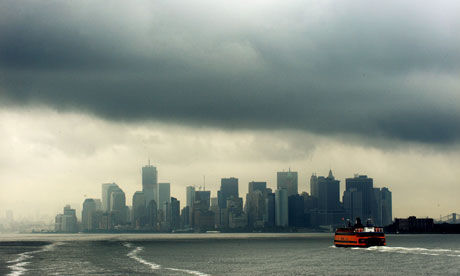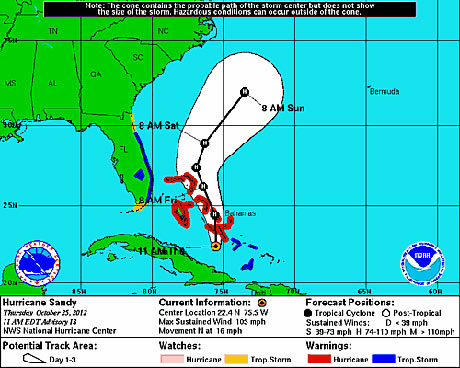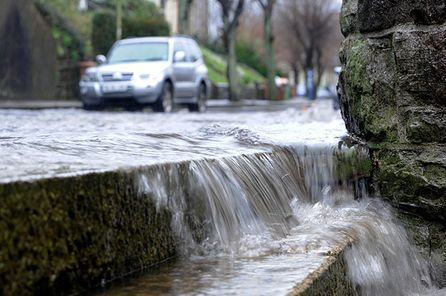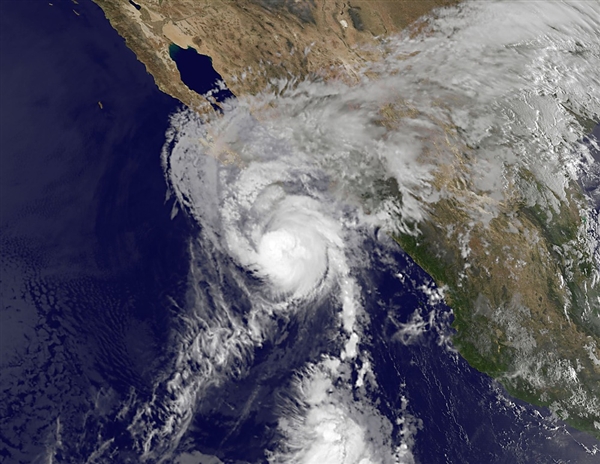
"It really could be an extremely significant, historic storm," said Brian McNoldy, a senior research associate at the University of Miami, explaining that conditions are similar to those that created the famous "perfect storm" of 1991.
Hurricane prediction is, of course, an iffy business, said Dennis Feltgen, a meteorologist and spokesman for the National Hurricane Center, who noted that the storm was still days from the East Coast and could weaken drastically or even shift course and race off into the Atlantic.
The chain of events that would make Hurricane Sandy develop into a grave threat to the coast involves a storm system known as a midlatitude trough that is moving across the country from the west. If the systems meet up, as many computer models predict, the storm over land could draw the hurricane in.
"Now you've got this giant storm complex with a lot of energy," Mr. Feltgen said. The combined systems could produce high winds, heavy rains and storm surges that would cause extensive damage.










